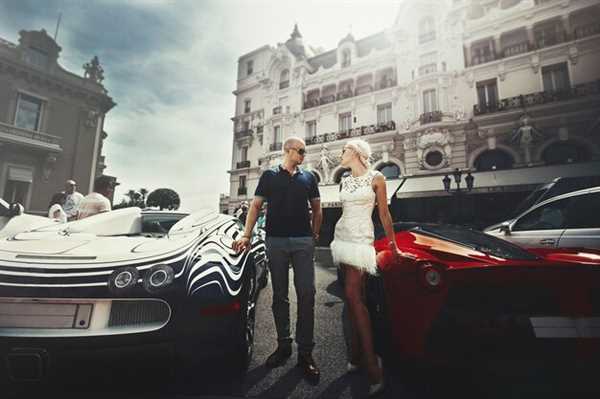![]()
Explore the remarkable lineage of vehicles from across the pond that have left an indelible mark on the road. Start your journey by discovering the stunning models from iconic manufacturers that set benchmarks for performance and design.
The engaging craftsmanship and innovative engineering showcased in these automobiles provide a unique perspective on the evolution of motor vehicles. Look at examples like the elegant models from Aston Martin, which combine speed and sophistication seamlessly, or the agile offerings from Lotus, renowned for their lightweight builds and precision handling.
Engage with the legacy of these remarkable machines by examining their influence on modern designs. Each model tells a story of ambition and creativity, leaving an unforgettable footprint in the realm of transport innovation.
Iconic Models and Their Impact on Automotive Design
![]()
The Aston Martin DB5 exemplifies elegance, combining performance and style. Its influence on design is profound; the seamless curves and luxurious interior set standards for future grand tourers. This model introduced advanced engineering features that are now commonplace.
The Jaguar E-Type redefined sports vehicle design, merging aesthetics with speed. Its elongated body and innovative monocoque construction inspired generations of manufacturers, emphasizing the importance of form meeting function. This masterpiece has influenced countless successors across the globe.
The Rolls-Royce Phantom remains a beacon of opulence. Its attention to detail and craftsmanship resonate throughout the industry, prompting rival makers to elevate their offerings. The iconic grille and silhouette have become synonymous with prestige, influencing luxury vehicles worldwide.
The mini Cooper revolutionized compact design, showcasing how functionality could harmonize with character. Its agile demeanor and clever use of space initiated a shift towards smaller, more versatile designs. This model paved the way for modern city vehicles.
Meanwhile, the Land Rover Series I laid the groundwork for off-road capability, boasting rugged practicality while maintaining stylish contours. This combination has inspired numerous all-terrain vehicles, proving that durability can coexist with aesthetic appeal.
The Evolution of Luxury Features in British Cars
![]()
The shift in premium attributes within vehicles from the UK demonstrates a remarkable trajectory since the early 20th century. Initially, opulent touches included lavish leather upholstery and polished wood trims, reflecting artisanship in craftsmanship.
The introduction of advanced technology in the 1960s marked a significant milestone. Innovations such as air conditioning and power steering became standard, offering enhanced comfort and ease of maneuverability. Iconic models began incorporating electronic features, pushing boundaries further.
By the 1980s, the emphasis on personalized experiences surged. Automakers initiated bespoke programs, allowing customers to select unique finishes and materials, thereby enhancing exclusivity. This era saw the integration of sophisticated sound systems and advanced climate control technology.
Modern iterations focus on sustainability without compromising comfort. Hybrid and electric powertrains are now standard, paired with luxury amenities such as heated and cooled seats, adaptive cruise control, and advanced infotainment systems that connect seamlessly with personal devices.
Today, the integration of autonomous driving technology signifies another leap forward. Premium brands are investing heavily in safety features and driver-assist technologies, providing a new dimension of luxury that prioritizes both indulgence and security.
This evolution illustrates the relentless pursuit of excellence in the UK automotive sector, continually enhancing the driving experience while setting high standards globally.
Collectibility and Investment Potential of Classic British Vehicles
Investing in these vehicles offers high returns, particularly models like the Jaguar E-Type or Aston Martin DB5, with values increasing significantly over the past decade. Examine auction trends, as some vehicles appreciate over 10% annually. Pay attention to provenance; authenticity and history enhance value. Rare models or limited editions are sought after, often yielding premium prices at collectors’ events.
Participating in well-established car shows can aid in networking with fellow enthusiasts and potential investors. Joining clubs associated with specific brands provides insights into market demand and authentic restoration techniques. Vehicles in pristine condition, supported by full maintenance records, command higher prices. Restoration can also boost value significantly, but only if done meticulously with original parts.
Consider insurance and storage costs when assessing long-term investment potential. Vehicles stored in climate-controlled facilities tend to retain value better than those exposed to the elements. Additionally, be wary of market fluctuations; certain models may experience sudden drops based on economic conditions or changing consumer preferences.
Engaging with industry experts and historians can offer deeper insights into investment strategies. Evaluating past sales history and current market trends through dedicated auction houses or online platforms can reveal lucrative opportunities. Ultimately, due diligence, combined with a passion for the craft, leads to informed decisions in this niche market.



